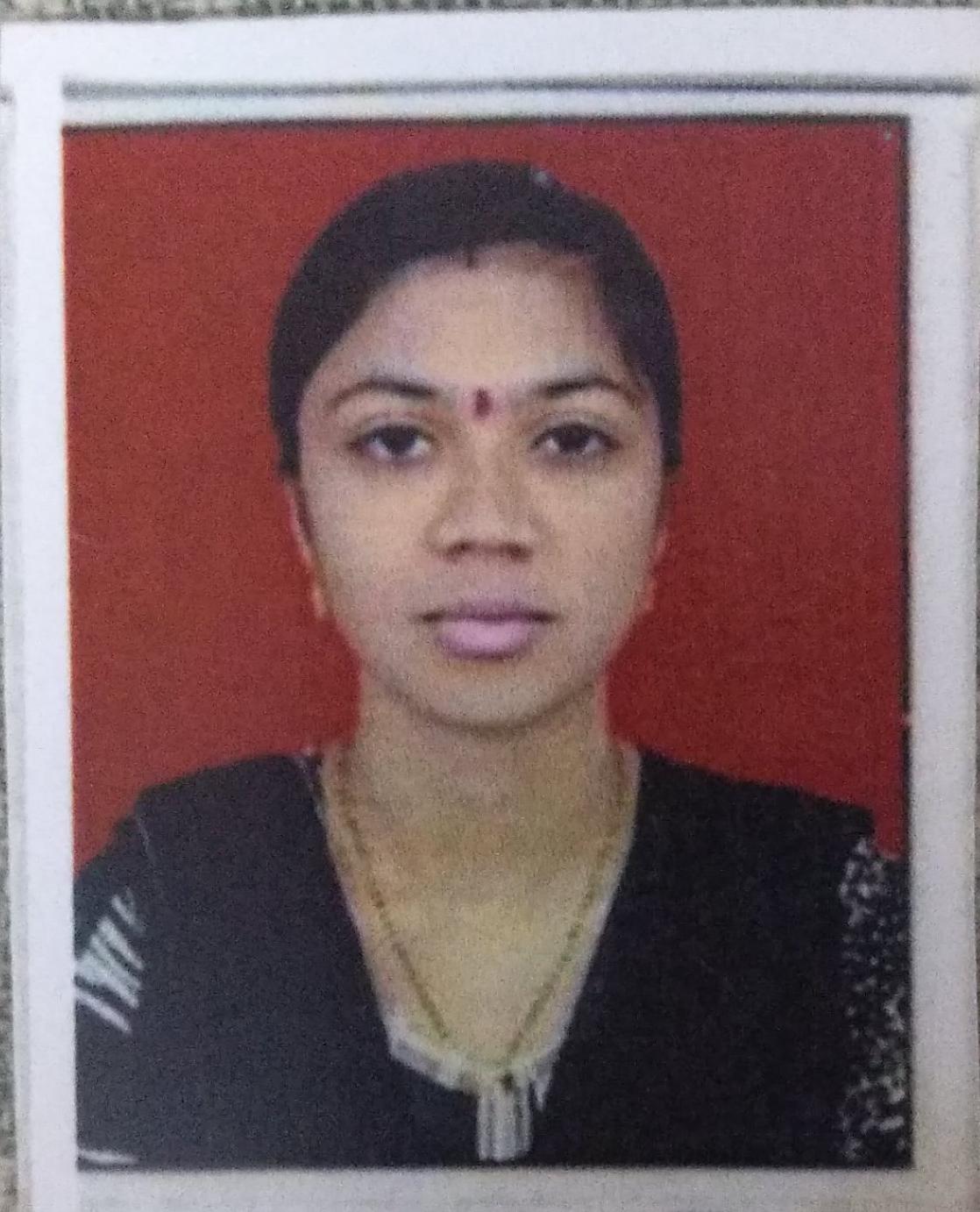Abstract
This study explores the antibacterial potential and phytochemical composition of Dioscorea bulbifera (Air Yam) tubers collected from Kolgaon, Chandrapur District, Maharashtra, India. Despite the challenging environmental conditions of Chandrapur, characterized by high temperatures and reduced medicinal plant diversity, Dioscorea bulbifera thrives in this region. The research investigates the antimicrobial activity of Dioscorea bulbifera tubers and peels against common pathogens such as Staphylococcus aureus and Escherichia coli. Results demonstrate significant zones of inhibition against these bacteria, indicating the plant's potential in combating infections. Phytochemical analysis reveals the presence of bioactive compounds like alkaloids, terpenoids, glycosides, and tannins in the tubers and peels. This study sheds light on the traditional medicinal uses of Dioscorea bulbifera and underscores its potential for developing novel antibiotics to address infectious diseases.
Keywords
Antibacterial activity, Phytochemical analysis, Dioscorea bulbifera, pathogens (Staphylococcus aureus, Escherichia coli).
Introduction
Dioscorea bulbifera Linn., commonly known as Air Yam, is a perennial vine belonging to the Dioscoreaceae family. This plant species is recognized for its tuberous roots, which have been utilized traditionally for various medicinal and culinary purposes (Grisebach 1864). Indigenous to regions with diverse climates, including colder areas like the Himalayas and temperate regions of America and Africa, Dioscorea bulbifera demonstrates a remarkable adaptability, thriving even in regions with hot and dry climates like Chandrapur District in Maharashtra, India.
Chandrapur District, situated in the eastern part of Maharashtra within the Vidarbha region, presents unique environmental conditions conducive to diverse crop cultivations. Despite facing challenges such as pollution and humidity, the region supports the growth of Dioscorea bulbifera, indicating the plant's resilience and adaptability to different environmental factors. The tubers of Dioscorea bulbifera are not only valued for their culinary appeal but also for their rich medicinal properties (Cargo GM1 and David JN2 2001) Traditional medicine systems, especially in India, have long recognized the therapeutic potential of Dioscorea bulbifera in treating various ailments such as asthma, rheumatism, abdominal disorders, and infections (Omalade mary Adeosun et al., 2016)Additionally, the plant's tubers and peels are known for their blood-purifying properties, further highlighting their significance in traditional healthcare practices. Recent scientific studies have further corroborated the traditional use of Dioscorea bulbifera by uncovering its antibacterial properties and phytochemical composition ( Kuete V et al., 2012) Research conducted on tuber and peel extracts of Dioscorea bulbifera from Chandrapur District revealed significant antibacterial activity against common pathogens like Staphylococcus aureus and Escherichia coli (Dahiya P. et al., 2017) Phytochemical analysis of the extracts identified various bioactive compounds including alkaloids, tannins, flavonoids, terpenoids, glycosides, and steroids, which contribute to the plant's therapeutic potential. (Salunke Anand Chetana1 and Satpute RA22018) The exploration of Dioscorea bulbifera's antibacterial potential is particularly significant in the context of increasing antibiotic resistance, necessitating the development of alternative therapies. By isolating and characterizing the active ingredients present in Dioscorea bulbifera, researchers aim to develop novel antibiotics that could address the growing threat of infectious diseases (Parash Preeti et al., 2015) Furthermore, the findings of these studies support the continued use of Dioscorea bulbifera in traditional medicine systems and underscore the importance of further research to unlock its full medicinal potential. In this review, we delve into the antibacterial properties and phytochemical composition of Dioscorea bulbifera tubers and peels, drawing insights from recent studies conducted in Chandrapur District, Maharashtra. We examine the methodology employed in these studies, analyze the results obtained, and discuss the implications of these findings in the context of traditional medicine and modern healthcare practices (Ikriza H et al.,2019)). Additionally, we explore the potential avenues for future research aimed at harnessing the therapeutic benefits of Dioscorea bulbifera for combating infectious diseases and improving public health outcomes.
MATERIAL AND METHODS
Plant collection
Tuber of Dioscorea bulbifera Linn.(Arial Yam) were collected from rural area (Kolgaon) of Chandrapur District Maharashtra.
Preparation of plant material
Fresh Dioscorea bulbifera tubers were washed and the peels were separated. The tubers were cut into pieces and dried in the shade for a week. Subsequently, both the tubers and peels were ground using a mechanical grinder for 5 minutes. The resulting powder was stored in an airtight container in a laboratory refrigerator at 4°C until use in present study.
Preparation of 10% DMSO solution
1ml Dimethyl sulfoxide solution (DMSO) in 9 ml Distilled water.
Preparation of plant extract
100g of dried powdered Tuber and peels of Dioscorea bulbifera were separately mixed with distilled water and ethanol in Erlenmeyer flasks. The flasks were covered with aluminum foil and placed on a rotary shaker at room temperature for three days. After mixing, the extracts were filtered using Whatman filter paper No.1 and evaporated on a water bath. 5ml of DMSO was added to each flask, which were then stored at 4°C for future use.
PHYTOCHEMICAL ANALYSIS
Standard phytochemical screenings described by (Bhat H. M et al., 2019) were separately carried out on the crude extracts of the bulbils and peels of Dioscorea bulbifera to detect the presence and absence of alkaloids, saponins, tannins, terpenoid, flavonoids , Glycoside and other bioactive compounds. Each of the detected bioactive compounds was quantify using different techniques described. (Omalade mary Adeosun et al., 2016)
SCREENING OF ANTIBACTERIAL ACTIVITY
Preparation of Inoculum
To prepare the primary culture, Escherichia coli and Staphylococcus aureus were inoculated into sterile nutrient broth and incubated at 37°C for 24 hours until turbidity was observed.
Determination of Antimicrobial Activity of Tuber and Peel of Dioscorea bulbifera by Well Diffusion Method.
The antimicrobial activity of tuber and peel extract was assessed using the Agar Well Diffusion Method. Petri plates and pipettes were autoclaved. Nutrient Agar was sterilized and poured into Petri plates. Broth culture of bacteria was spread on each plate. A well was punctured and extracts were added. Plates were then incubated at 37°C for 24 hours and examined for inhibition zones.
RESULT
The antimicrobial activity of Dioscorea bulbifera tuber and peels ethanol and aqueous extracts showed zones of inhibition against Staphylococcus aureus and Escherichia coli. The tuber extracts exhibited zones of inhibition ranging from 20-38mm (ethanol) and 28-35mm (aqueous). In comparison, the peel extracts showed zones of inhibition ranging from 40-25mm (ethanol) and 36-19mm (aqueous) against the same bacteria strains.

Figure 1: Antimicrobial activity of Ethanol and Aqueous extract of Dioscorea bulbifera Tuber

Figure 2: Antimicrobial activity of Ethanol and Aqueous extract of Dioscorea bulbifera Peel
The substance Alkaloid, Terpenoid, Glycoside, Tannin, Flavonoid are the bioactive compound of Dioscorea bulbifera table represent that’ the Tuber Ethanol extract confirm the presence of Alkaloid, and Terpenoid and Tuber Aqueous extract confirm the presence of Alkaloid, Tannin, Glycoside. Peels Ethanol extract confirm the presence of Alkaloid, Terpenoid, Glycoside. Peels Aqueous extract confirm the presence of Tannin, Terpenoid, Glycoside.

Table 1: Phytochemical analysis of Dioscorea bulbifera (Linn) Tuber and Peels of Ethanol and Aqueous extract.
+ =Present, - =Absent
DISCUSSION
Research conducted on tuber and peel extracts of Dioscorea bulbifera from Chandrapur District revealed the significant antibacterial potential of Dioscorea bulbifera, also known as air potato, against specific pathogens such as Staphylococcus aureus and Escherichia coli, drawing on its traditional medicinal use. By extracting bioactive compounds using solvents like ethanol and water, they isolated consistent extracts to evaluate their antibacterial properties across various pathogen categories. This research aims to uncover the therapeutic possibilities of Dioscorea bulbifera in combating bacterial infections. ( Parash Preeti et al ., 2015) The preliminary analysis of deep eutectic solvents extract of Dioscorea bulbifera tuber and peel showed the presence of Alkaloids, Phenol, Glycoside, Flavonoids, Protein and Tannin, Terpenoid. (Salunke Anand Chetana and Satpute RA 2018) recent studies conducted in Chandrapur District, Maharashtra. We examine the methodology employed in these studies, analyze the results obtained, and discuss the implications of these findings in the context of traditional medicine and modern healthcare practices. Assist pharmaceutical companies in determining the most beneficial parts of the plant that contain high levels of active ingredients needed for therapeutic purposes.
CONCLUSION
The plant extract's inhibition zone against the test organism suggests its potential for treating infections. The active ingredients Alkaloids, Flavonoids, Glycoside, Tannin, Terpenoid could be isolated and crystallized to create therapeutic antibiotics. The present study support ethanomedicinal use of Dioscorea bulbifera against bacterial pathogens. The results support traditional plant use and offer opportunities for developing novel antibiotics to combat infectious diseases.
REFERENCES
- Baker, E.A., J.T. Martin, and A.P.Wilson. 1966. Distribution of diosgenin in Dioscorea spp. Annals of Applied Biology 58:203-211.
- Bhat H. M. Fayaz M, Kumar A, Jain AK. Phytochemical Screening and Nutritional Analyses of Some Edible Parts of Dioscorea bulbifera L. Chem Sci Trans, 2019, 8(1): 20- 27.
- Cargo GM and David JN (2001). Natural products drug discovery in the next millennium. Journal Pharmaceutical Bio, 39:8-17.
- Dahiya P. Phytochemical Investigation and Antimicrobial Properties of Dioscorea bulbifera Tuber. Asian Journal Pharmaceutical Clinical Research, 2017; 10(12):317-319.
- Grisebach, A.H.R. (1864) Flora of the British West Indian Islands. Lovell Reeve and Company, London.
- Ikriza H, Ogwang PE, Peter EL, Hedmon O, Tolo CU, Abubaker M, Abdaalla AAM Dioscorea bulbifera, A Highly Threatened African Medicinal plant, A Review Cogent Biology, 2019, 5: 1631561. Doi: 10.1080/23312025.2019.1631561.
- Kuete V, Betrandteponno R. Mhaveng AT. Tapondjou LA, Meyer II. Barboni L, et al. Antibacterial activities of the extracts, fractions and compounds from Dioscorea bulbifera BMC Complement Altern Med 2012:12:228
- Omolade Mary Adeosun, Daniel Justin Arotupin, Odeyemi Adebowale Toba, Alaba Adewala Adebayo ((2016) Journal of Phytoopharmocology. 5(1): 20-26.
- Parashar Preeti, Solanke C.M (2016) international Journal of Science and Research Volume 5 Issue 10, 6.391.
- Salunke CA, Satpute RA. Phytochemical screening and in vitro antimicrobial activity of extracts from tubers of wild Dioscorea species. Journal of root crops, 2018; 44(1): 61-65.


 Bulbul G. Karmankar * 1
Bulbul G. Karmankar * 1
 Poonam Thakare 2
Poonam Thakare 2
 Vijay S. Wadhai 3
Vijay S. Wadhai 3


 10.5281/zenodo.10935385
10.5281/zenodo.10935385